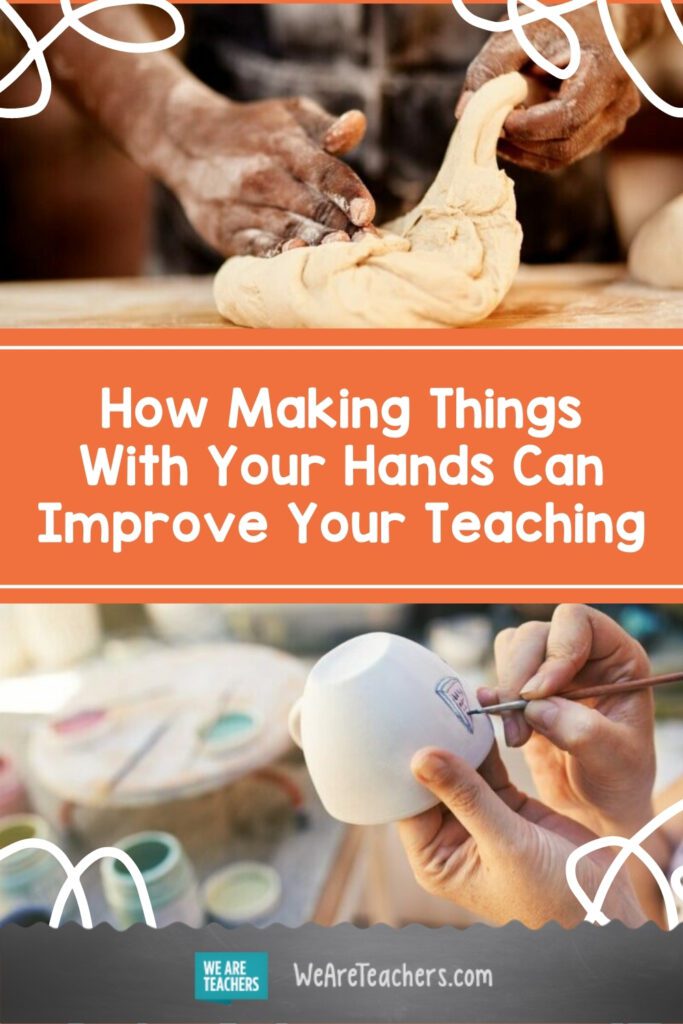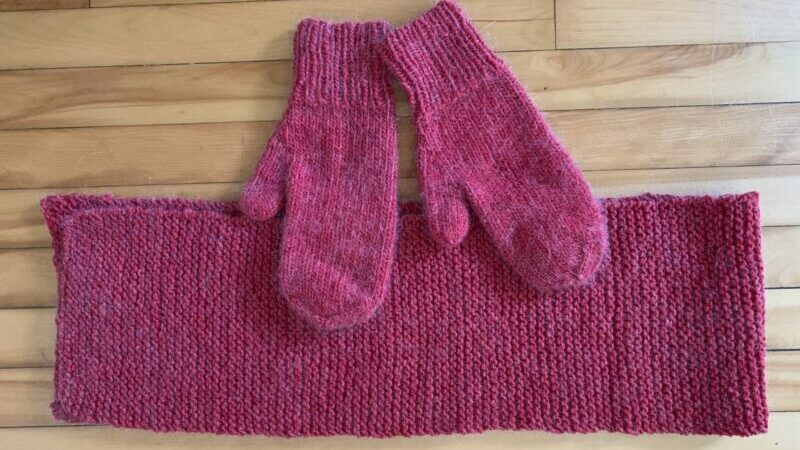At six years old, I learned to knit, and I’ve been knitting ever since. I even taught my second graders to knit one year when we were on day 17 of inside recess. I reflect a lot on how my teaching grows and changes. One thing I’ve always noticed is that the actual act of working with my hands changes the way I felt about my work. Here’s how teaching can be improved as a result of handwork:
Making something with your hands increases your understanding of the reward circuit
The physical act of working with your hands is easier for your brain to recognize as a project in process. For example, when you knit something, you can actually see it taking shape before your eyes, and the sense of reward grows incrementally. These tasks don’t take too much brainwork but still offer you a sense of accomplishment. This, in turn, increases your motivation to complete other things. Understanding this process, you might change up how you assign work so that students have the ability to monitor and record their process.
Here’s how you can reward process in your classroom.
Working with your hands boosts memory and creativity
Repetitive motion taxes your brain less because it works like a habit. When a task doesn’t require much thinking work, it allows your brain to work on problems ‘behind the scenes’ and process knowledge and information deeply. This leads to greater creativity and breakthroughs.
Here’s how you can boost creativity in your classroom.
[contextly_auto_sidebar]

Making something with your hands calms your mind
Our world is a constant stream of information and disruptions. When you work by hand, you need to be attentive and repetitive, which forces your brain to focus. It helps remove distractions and sharpens focus, giving your brain a break.
Here’s how to reinforce self-calming in your classroom.
Connecting your hands to your brain reduces stress
In order to survive, our ancestors used their hands to build, knit, cook, sew, and hunt. This is why working with our hands gives us an added boost of pleasure—because our brain reads it as survival. When we use technology to do everything, our brain thinks we are not working enough to survive, which in turn can produce chronic stress.
Here’s how connecting mind to body can work in your classroom.

Learn a new way to work with your hands
One of the interesting side effects of the pandemic was that people started doing handwork without realizing it would reduce their fear and make them more creative. Let’s not lose that new discovery! Finding a way to incorporate making in your life will truly improve your teaching and your life. You don’t have to be the best maker out there; you just have to take time (hopefully daily) to make something. Even building a LEGO set or working on a puzzle can get the same benefits. Here are some great tutorials to get you started on doing something you love.
- Sourdough Bread: A Beginner’s Guide.
- How to knit for beginners.
- How to crochet for beginners.
- Little Free Libraries anyone can build.
The ability to perform complex tasks with our hands has always fueled human civilization. Our hands have played an important role in our evolution. Using them more connects us to the very core of what makes us humans. So ditch the dishwasher for a hand-scrubbing once in a while or knit a hat instead of scrolling through social media. Your brain will be happier for it, and so will your teaching.
Want to get your students making things with their hands? Check out 25 Creative Ways for Kids to Learn, Craft, and Play With Yarn.


